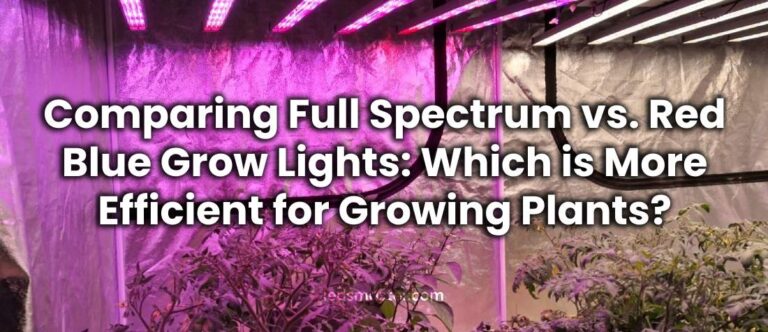
Imagine a greenhouse where every plant thrives, lush and vibrant, no matter the season. The key to this green oasis? Expert lighting design. By mastering greenhouse lighting, you can create an environment where plants flourish year-round. Join us as we explore the essential elements of greenhouse lighting, uncovering the secrets to achieving optimal growth and productivity.
Get your complimentary lighting design today
Designing the perfect lighting setup for a greenhouse is a complex task that requires careful consideration of various factors to ensure optimal plant growth. This involves choosing the right types of grow lights, understanding key lighting parameters, and planning an effective lighting layout. Each of these elements plays a crucial role in creating an environment where plants can thrive, especially in conditions where natural sunlight is insufficient.
Table of Contents
Toggle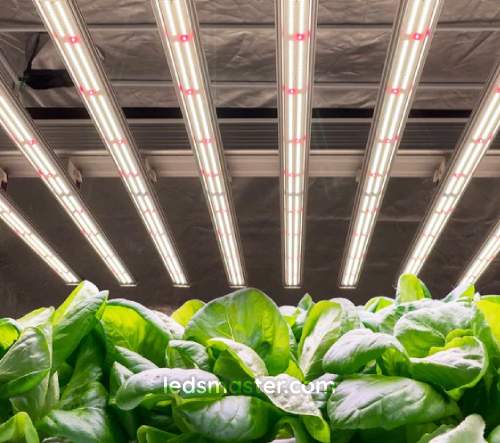
Full spectrum lights are designed to mimic natural sunlight, providing a balanced range of wavelengths that plants need for all stages of growth. These lights cover the entire spectrum from ultraviolet to infrared, making them suitable for both vegetative growth and flowering. The advantage of full spectrum lights is their versatility; they can be used for a variety of plants and growing stages. They also tend to be more energy-efficient compared to other types of grow lights, making them an excellent long-term investment for any greenhouse.
Full spectrum lights not only support the basic needs of plants but also enhance their overall health and vigor. By providing a comprehensive range of light, these lights ensure that plants receive all the necessary wavelengths for photosynthesis and other physiological processes. This leads to stronger, more resilient plants that can better withstand pests and diseases. Moreover, the balanced light spectrum promotes more natural growth patterns, resulting in healthier and more aesthetically pleasing plants.
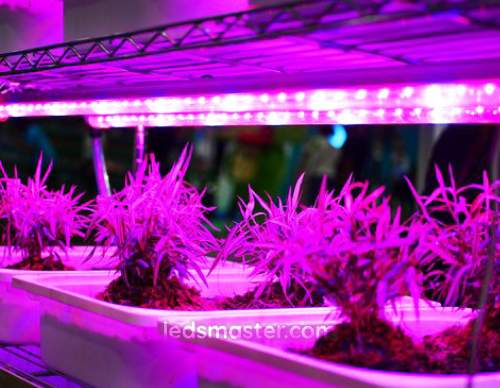
Red and blue lights focus on the specific wavelengths that are most beneficial to plants. Blue light, typically in the 400-500 nm range, is crucial for vegetative growth, encouraging strong root development and healthy leaves. It enhances the production of chlorophyll, which is essential for photosynthesis. Red light, in the 600-700 nm range, promotes flowering and fruit production by triggering phytochrome responses that regulate plant development stages.
Using a combination of red and blue lights can enhance specific growth stages and increase overall plant productivity. These lights are often used in LED grow lights, which can be adjusted to emit the desired wavelength combination. This adjustability allows growers to fine-tune the light spectrum to meet the needs of different plants or growth stages, maximizing efficiency and results. The targeted wavelengths ensure that plants receive the most beneficial light without wasting energy on unnecessary wavelengths, making red and blue lights a popular choice for many greenhouse applications.
High-Pressure Sodium lights are known for their high intensity and efficiency. They emit a broad spectrum of light, but with a strong emphasis on the red and yellow wavelengths. This makes them particularly effective during the flowering and fruiting stages of plant growth. The intense light output of HPS lights can significantly boost plant productivity and yield during these critical stages.
However, HPS lights generate a significant amount of heat, which can be a concern in a controlled greenhouse environment. Adequate ventilation and cooling systems are necessary when using HPS lights to prevent heat stress on plants. Despite this drawback, many growers still prefer HPS lights for their proven performance and reliability. They are particularly useful in large-scale commercial operations where high yields are a priority, and the cost of additional cooling systems can be justified by the increased productivity.
Metal Halide lights emit a light spectrum that is rich in blue wavelengths, making them ideal for the vegetative growth phase. They support robust plant growth and are often used in the early stages of plant development. The strong blue light output of MH lights promotes compact, bushy growth and enhances the development of healthy leaves and stems.
Like HPS lights, Metal Halide lights also produce considerable heat, requiring proper ventilation and cooling solutions. They are often used in combination with HPS lights to provide a comprehensive lighting solution throughout the plant’s life cycle. By using MH lights during the vegetative stage and switching to HPS lights during the flowering stage, growers can optimize light conditions for each phase of plant development. This combination approach ensures that plants receive the best possible light for their specific needs at every stage, leading to healthier plants and higher yields.
Designing the lighting layout in a greenhouse involves strategic placement of lights to ensure even coverage and optimal light distribution. The goal is to provide uniform light across all plants, minimizing shadows and ensuring that every plant receives the necessary amount of light for growth.
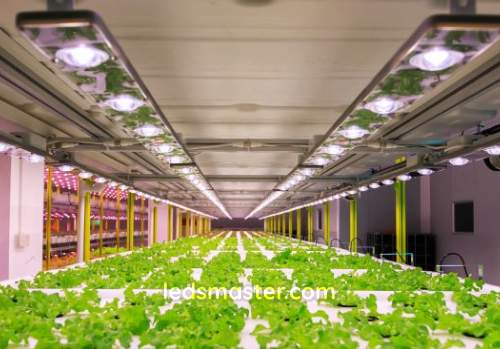 A common approach in greenhouse lighting is the grid layout, where lights are evenly spaced in a grid pattern across the growing area. This layout ensures that light is distributed uniformly, reducing the risk of hotspots or areas with insufficient light. The distance between lights and the height at which they are hung are critical factors that need to be adjusted based on the type of grow lights used and the specific light requirements of the plants. Proper spacing in a grid layout ensures that each plant receives an equal amount of light, promoting uniform growth throughout the greenhouse.
A common approach in greenhouse lighting is the grid layout, where lights are evenly spaced in a grid pattern across the growing area. This layout ensures that light is distributed uniformly, reducing the risk of hotspots or areas with insufficient light. The distance between lights and the height at which they are hung are critical factors that need to be adjusted based on the type of grow lights used and the specific light requirements of the plants. Proper spacing in a grid layout ensures that each plant receives an equal amount of light, promoting uniform growth throughout the greenhouse.
Additionally, the grid layout allows for scalability. As the greenhouse operation expands, more lights can be added to the grid without disrupting the overall light distribution. This flexibility is particularly beneficial for commercial growers who may need to increase their production capacity. By maintaining consistent light coverage, the grid layout helps optimize photosynthesis and plant health, leading to higher yields and better crop quality.
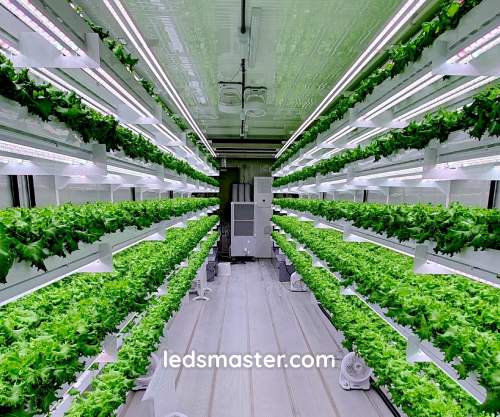 In vertical farming, plants are grown in stacked layers, and the lighting layout must be adapted to this multi-tiered structure. Lights are placed above each layer to provide adequate illumination, ensuring that all plants receive the necessary light for growth. LED lights are often preferred for vertical farming due to their low heat emission and ability to be placed close to the plants without causing damage. This layout maximizes space usage and can significantly increase the yield per square foot of greenhouse space, making it an efficient choice for urban agriculture and areas with limited space.
In vertical farming, plants are grown in stacked layers, and the lighting layout must be adapted to this multi-tiered structure. Lights are placed above each layer to provide adequate illumination, ensuring that all plants receive the necessary light for growth. LED lights are often preferred for vertical farming due to their low heat emission and ability to be placed close to the plants without causing damage. This layout maximizes space usage and can significantly increase the yield per square foot of greenhouse space, making it an efficient choice for urban agriculture and areas with limited space.
The vertical farming layout also allows for more precise control of the growing environment. By using LED lights with adjustable spectrums, growers can tailor the light conditions for each layer, optimizing growth for different plant species or growth stages. This level of control can lead to higher productivity and more efficient use of resources, as plants receive exactly the light they need for optimal growth. Additionally, the reduced heat output of LEDs minimizes the need for extensive cooling systems, further enhancing the efficiency of vertical farming operations.
Supplemental lighting is used in greenhouses to augment natural sunlight, especially during the shorter days of winter or in regions with limited sunlight. The lighting layout for supplemental lighting involves strategically placing lights to complement the natural light, ensuring that all plants receive sufficient light throughout the day. This can involve installing lights along the sides of the greenhouse or suspending them above the plants to fill in any gaps in natural light coverage.
The key to effective supplemental lighting is to balance artificial light with natural sunlight. This requires careful monitoring of light levels and adjusting the supplemental lights as needed to maintain consistent light conditions. Supplemental lighting systems often include sensors and automated controls to adjust light intensity based on real-time conditions, ensuring that plants always receive the optimal amount of light. By integrating supplemental lighting with natural sunlight, growers can extend the growing season, improve plant health, and increase yields, regardless of external weather conditions.
PPFD measures the amount of light, in micromoles, that reaches a square meter of plant canopy per second. This parameter is critical for assessing how much usable light is available to plants for photosynthesis. A higher PPFD indicates that more light is reaching the plants, which can enhance growth rates by providing the energy necessary for photosynthesis. However, it’s essential to understand that different plants have varying PPFD requirements. Exceeding these requirements can lead to light saturation, where the plant cannot utilize the excess light, potentially causing stress or damage.
For example, leafy greens like lettuce and spinach typically thrive with a PPFD between 150-250 µmol/m²/s, while fruiting plants like tomatoes and peppers may require a PPFD of 400-600 µmol/m²/s. It’s crucial to tailor the PPFD to the specific needs of the plants being grown to ensure optimal growth without causing harm. Additionally, monitoring and adjusting PPFD can help mitigate issues related to light distribution, ensuring that all parts of the plant canopy receive adequate light.
PPF measures the total amount of light, in micromoles, emitted by a light source per second. Unlike PPFD, which measures light at the plant canopy level, PPF provides an overall assessment of the light’s capability to support plant growth by quantifying the total output of the light source. High PPF values are desirable for ensuring that there is sufficient light available to meet the plants’ needs, especially in larger greenhouses where light must cover a more extensive area.
A high PPF value indicates a light source’s efficiency in generating photons that drive photosynthesis. For instance, an LED grow light with a high PPF can effectively illuminate a large growing area, promoting uniform growth across all plants. This parameter is particularly important when designing the lighting layout, as it helps determine the number and placement of light fixtures needed to achieve the desired light levels throughout the greenhouse.
DLI represents the total amount of photosynthetically active radiation (PAR) received by plants over the course of a day, measured in mol/m²/day. It integrates the PPFD over the entire photoperiod, which is the duration that lights are on each day. Different plants have specific DLI requirements for optimal growth. For instance, leafy greens may require a lower DLI compared to fruiting plants like tomatoes, which have higher energy demands.
Understanding and controlling DLI is crucial for achieving consistent and high-quality plant growth. For example, if a crop of tomatoes requires a DLI of 20 mol/m²/day, and the greenhouse receives 10 hours of natural sunlight with an average PPFD of 400 µmol/m²/s, supplemental lighting may be needed to meet the total DLI requirement. By carefully monitoring and adjusting the DLI, growers can ensure that plants receive the optimal amount of light for robust growth and development, leading to higher yields and better quality crops.
The light spectrum refers to the range of wavelengths emitted by a light source. Different wavelengths play specific roles in plant growth and development. Blue light, typically in the 400-500 nm range, is essential for vegetative growth and chlorophyll production, promoting strong root development and healthy leaves. Red light, in the 600-700 nm range, is crucial for flowering and fruiting, stimulating plant responses that lead to the production of flowers and fruits.
Full spectrum lights cover the entire range of wavelengths, providing a balanced light source that supports all stages of plant development. These lights are particularly beneficial in greenhouses where a diverse range of plants is grown, each with different light requirements. By selecting the appropriate spectrum based on the plants’ growth stages and specific needs, growers can optimize growth conditions, enhance plant health, and increase productivity.
For instance, during the vegetative stage, a light source with a higher proportion of blue wavelengths can promote compact, bushy growth, while during the flowering stage, increasing the proportion of red wavelengths can enhance flower and fruit production. Understanding the role of different wavelengths and adjusting the light spectrum accordingly allows for precise control over plant growth, leading to more efficient and effective greenhouse operations.
Designing a greenhouse lighting system involves a comprehensive understanding of various types of grow lights and their specific applications, from full spectrum lights that mimic natural sunlight to specialized red and blue lights that target specific growth stages. Equally important is the consideration of lighting layouts, such as the grid layout for uniform light distribution, vertical farming layouts for space efficiency, and supplemental lighting to enhance natural sunlight. Key parameters like PPFD, PPF, DLI, and light spectrum play crucial roles in optimizing plant growth, ensuring that plants receive the right amount and quality of light throughout their growth cycle. By mastering these elements, growers can create thriving, productive greenhouses that support healthy, vigorous plant growth year-round.